2020-04-13
Series "Central & South America"
Authors
Bruno Vilela
works creating and coordinating projects in the areas of Visual Arts, Education and Human Rights. He holds a degree in Visual Arts from Escola Guignard (UEMG) and in Business Administration (PUC-MG). He is co-creator and director of the FIF BH - Belo Horizonte International Photography Festival and Area Criativa. He won the Select Art Education Award and co-created the project that was awarded by the XIV FUNARTE Marc Ferrez Photography Prize.
Lorena Vicini
is currently Communication Manager at Instituto Inhotim (Brazil), PhD Candidate at Kunsthochschule Kassel (Germany) and researcher at the research platform documenta studies; Her main topics are decolonial institutional critic and decolonization of artistic and cultural institutions.
Cultural Management as an Exercise in Autonomy
Building a Cultural Space and its Framework in the Brazilian Countryside
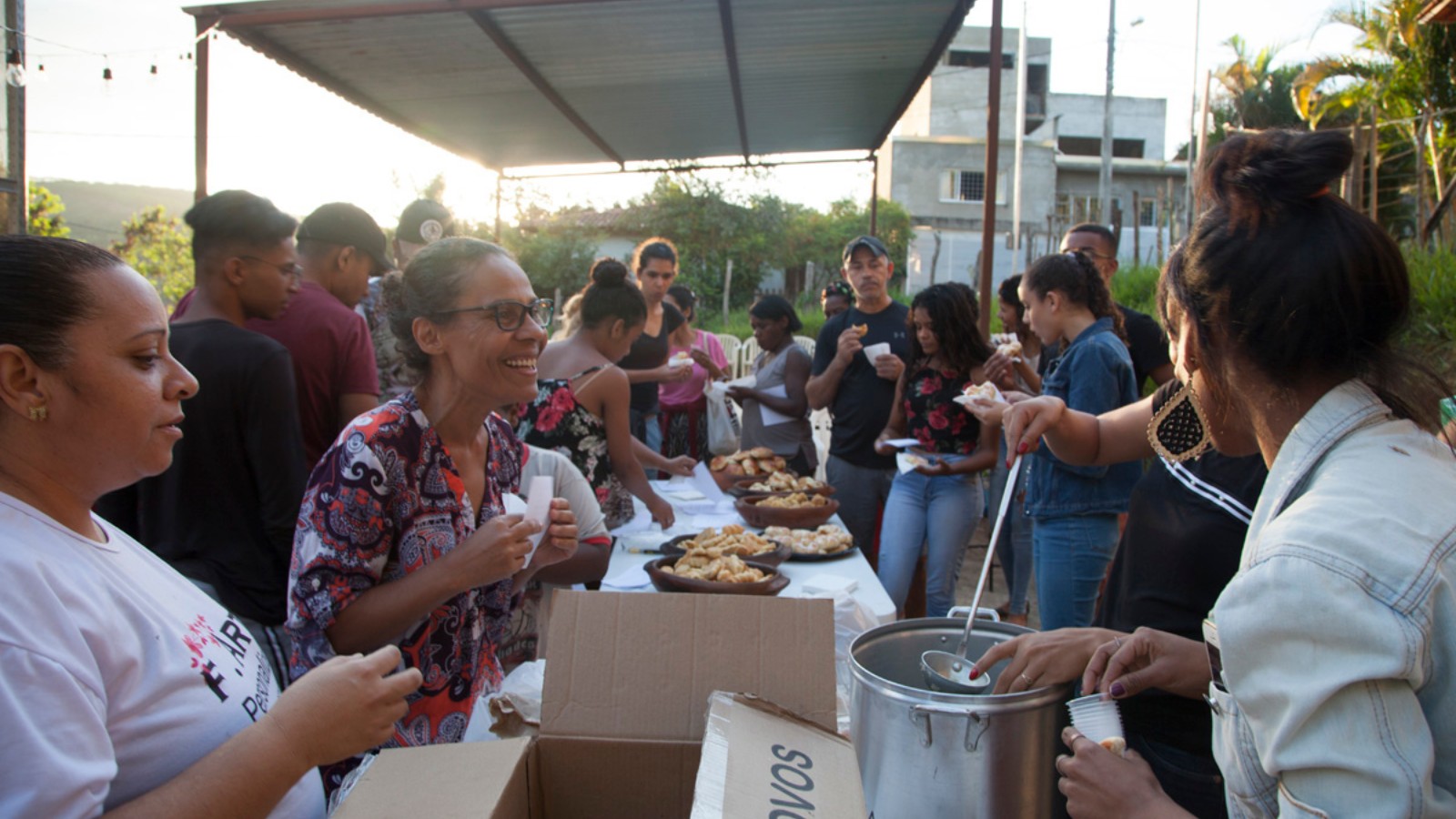
The creation of a cultural space proposed and collectively managed by children, youth and adults is not an easy task, neither in well-equipped Western countries, nor in Brazil with its long tradition of approaching cultural management as community management. Bruno Vilela, educator, curator and founder of the Área Criativa project in an indigene community of former enslaved people, talks about the work and methodology that raised a local "Open Roof Space".
Series "Central & South America"
Lorena Vicini: How did the idea of the project come up?
Bruno Vilela: The proposal of Área Criativa was to build cultural spaces dedicated to gathering, production, formation, artistic exchange and experimentation. The first edition of the project was held in 2015 and originated in the context of an youth political participation approach in a small city called Pedra Azul (Vale do Jequitinhonha, province Minas Gerais in South-Western Brazil). In 2016, I was invited to run a workshop on human rights and artistic interventions, in which I met Vinicius. He is from from Pinhões, a city undergoing the process of being certified as a quilombola community (an identitarian Brazilian public policy that assures the recognition of communities organized by enslaved people in colonial Brazil). Back in the day, I thought this topic could unfold a good discussion and we organized a workshop in Pinhões. Together we built ETA (Espaço Teto Aberto, meaning Open Roof Space), in an area yielded by residents.
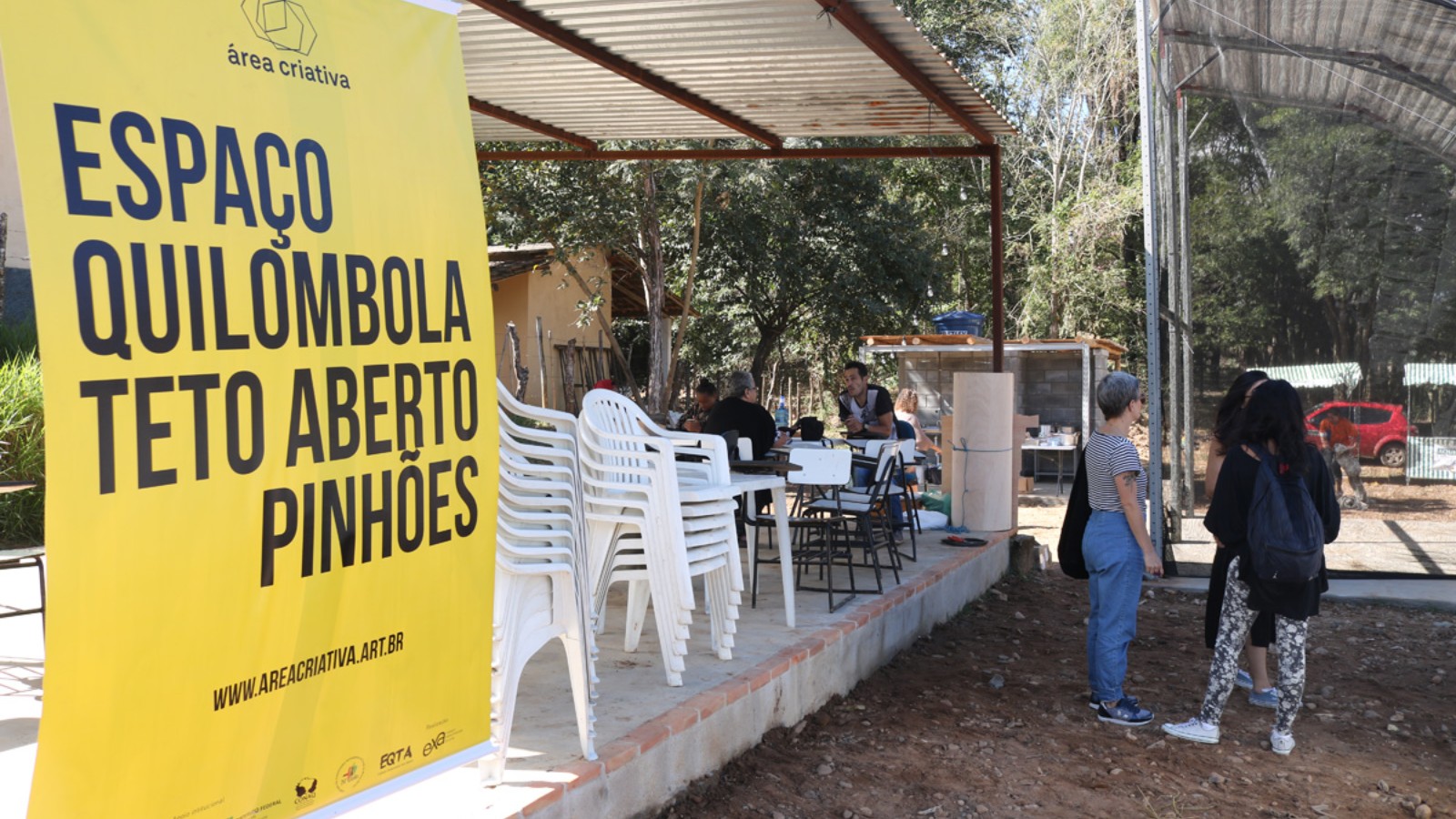
In 2017 Pinhões was recognized as a quilombola territory and therefore the space was renamed "Espaço Quilombola Teto Aberto”, embodying the concept of "quilombo” as an identity and as part of a historical understanding process about what it means to be a "quilombola”. In order to continue this process, we applied for a grant provided by a Brazilian private bank, called "Rumos Itaú Cultural 2017-2018”. Among all the 12.000 competing projects, the "Área Criativa de Pinhões” (Creative Area of Pinhões) was one of the 109 selected.
LV: And how do your concept and methodology work?
BV: The methodology comprises five steps:
- Mapping the community: which spaces are considered as important by the residents? Which social organizations, stores and influencers can be identified? In this phase, the aim is to make the group recognize the already existing potential of the territory.
- Planning the cultural space: envisioning a community map, and then think about the cultural space´ architecture: how can you contemplate all the expectations in one building? In this phase, we organized architecture workshops and task forces to build the space together.
- Programming the cultural space: what kind of event could be interesting for the participants and the residents? This is the phase to imagine, accomplish and commemorate.
- Artistic residencies: the space welcomes artists, cultural managers, collectives and groups that can help in the development of the enterprise.
- Collective management: the last step is to let the community manage the cultural space autonomously.
LV: How did the mapping stage work?
BV: The mapping was composed of three stages. Firstly, the participants interviewed each other to understand the expectations concerning the space. Secondly, the planning group interviewed the residents to hear what kind of ideas they would like to propose for the cultural space. This hearing exercise is crucial to build a space that accommodate diverse wishes. The third stage is the analysis of the mapping results. Using a set of interviews, conversations and observations, a map of Pinhões was laid out.


LV: The second stage was the construction of the space. Why was it so important to build a new space?
BV: The construction of our own space was important because the existing cultural spaces have their own operation rules defined by other people or groups. At the same time, discussing rules before a collective experience in a common space is always a bit abstract, because the practice and the conflicts are the basis to generate the rules that are gradually transformed and improved. The proposal of the project therefore was the construction of a space that is fully managed collectively, where the group did the exercise of elaborating its operation and programming rules. Therefore, it makes sense to imagine a place that can comprise their desires in its physical structure, that was built with this purpose.
Most spaces said to be participative are predominantly consultative rather than participative, since people can only give their opinion with a very limited number of options. In the end, we never really change the structure. The challenge is to weigh: how to create your own way of acting in the world? How to imagine other ways of doing things?
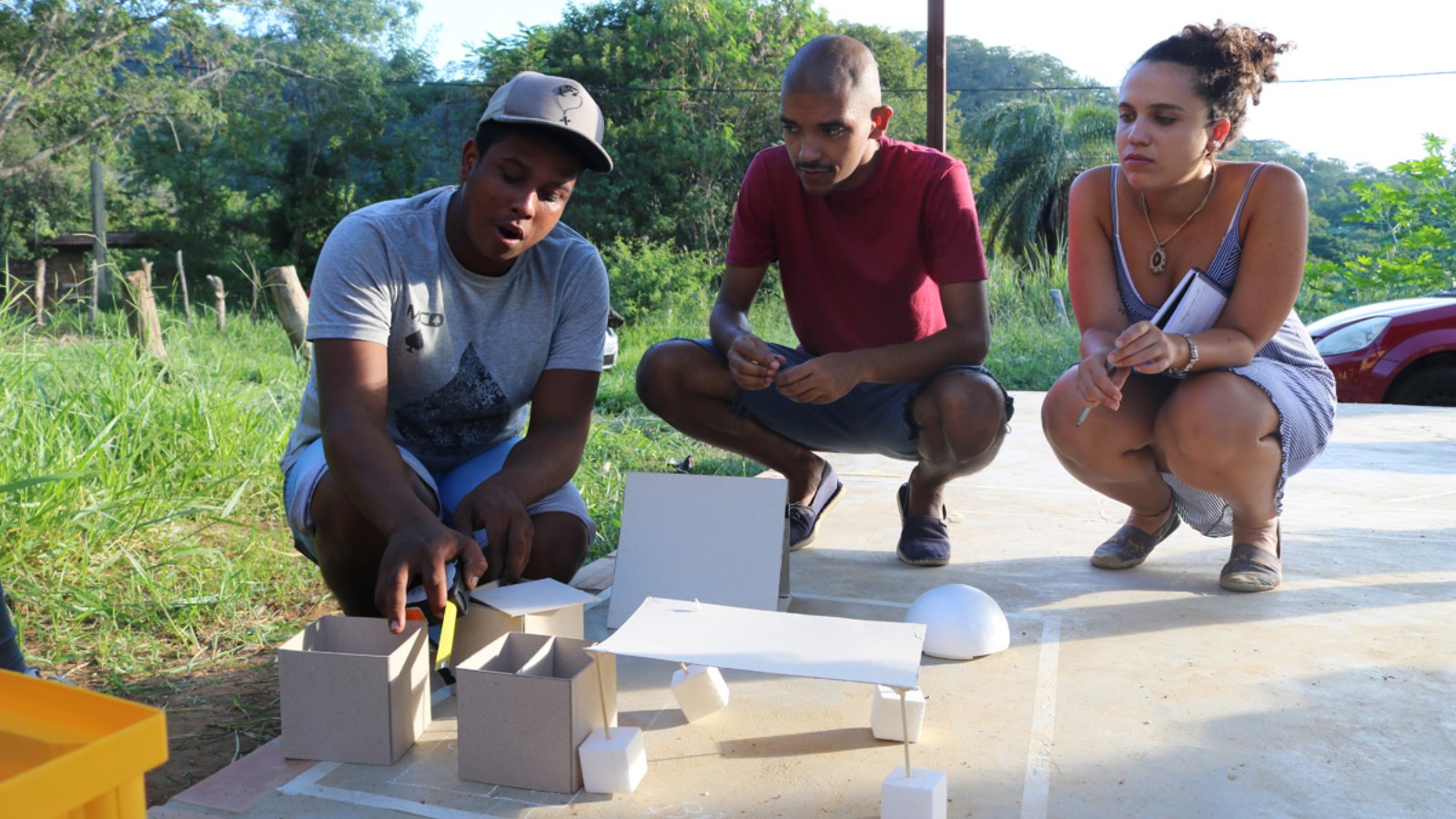
LV: What shape did the physical space ended up with, inlucding the wishes of the participants?
BV: In the mapping stage, we understood the participants’ wishes for that space: strongly necessary was a big kitchen (because in the community meals are always cooked for many people); it had to have a bedroom and a bathroom (to comfortably accommodate the artistic residents); it also needed a classroom and a storage. To help with the architectural planning, we partnered with architecture students from the Universidade Federal de Minas Gerais, and this was essential to provide technical knowledge and safety for the construction. Since it is a leased land, we chose a modular construction system, which is also easier to be handled by children, so everyone could take part in the building process.
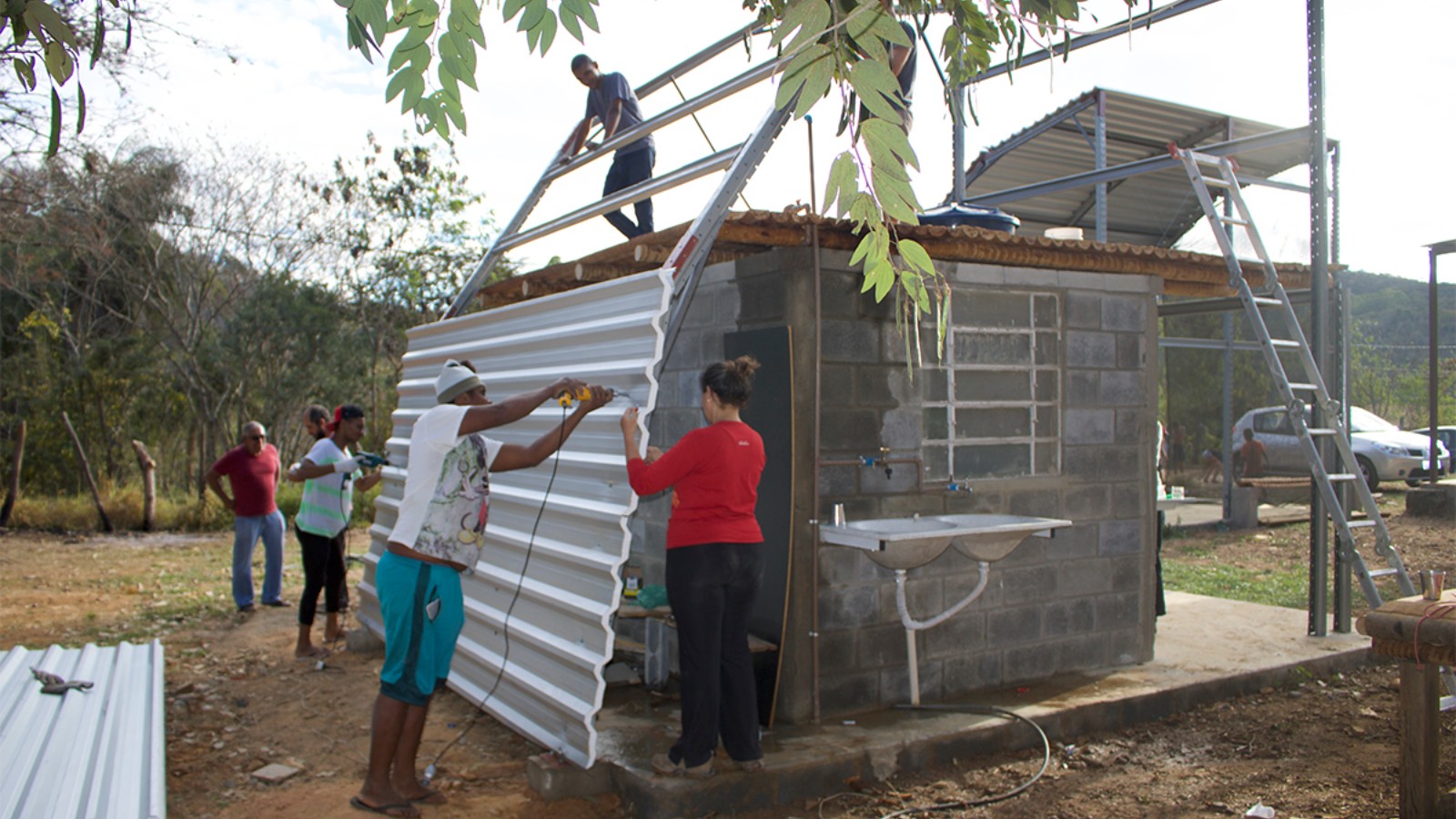
LV: And how did the participants' microprojects take place?
BV: The microprojects, proposed and managed by the participants themselves, started at the opening of the EQTA in June 2019. One of the projects, presented by Raul, 9 years old, was a workshop for the construction of soap box carts. Because the streets in the "Quilombo are still often unpaved, we adapted a stroller model, with larger rubber wheels so that children could go-karting on different terrains.
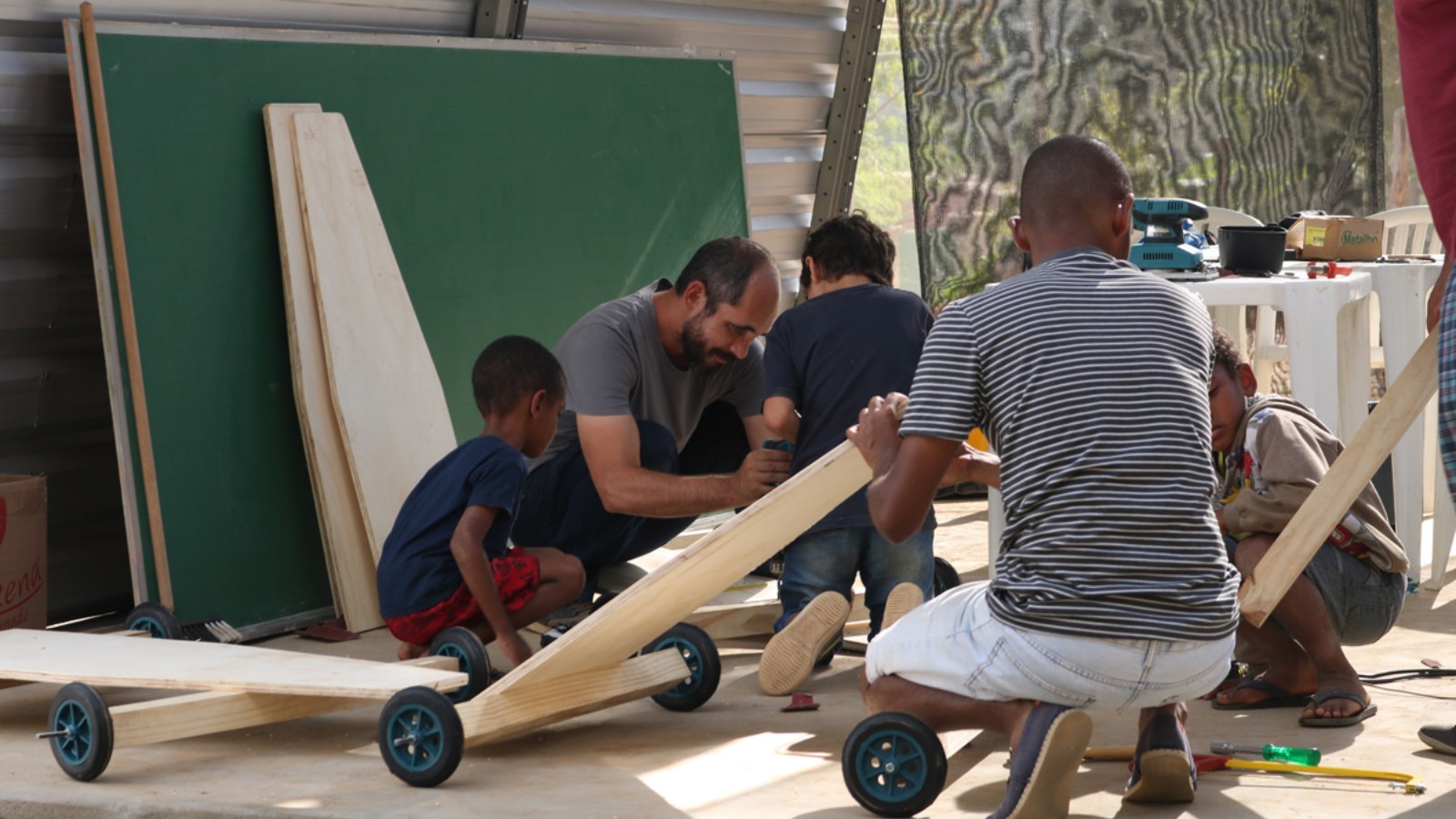
Another microproject was Daiana's, called "Quitutes do Quilombo” (Quilombo´s delicacies). The proposal arose from the observation that the meetings in Pinhões are always accompanied by a lot of traditional food. In order to share a part of the recipes of the community, Daiana decided to offer a tent with delicacies from Pinhão and their recipes.
Most of the microprojects were designed based on individual wishes, but the visit to Inhotim in the city of Brumadinho in Minas Gerais was a collective proposal. The Instituto Inhotim is a cultural center with an impressive collection of contemporary art and botanical objects, aiming to foster education, community and sustainable human development. For most of the group, it was their first visit to an art museum. This was a day to inspire the group to look at the world and their future space from new perspectives.
LV: The fourth stage of the project consisted of artistic residencies at EQTA. What were the criteria for an invitation and how did the artists get along with the community?
BV: In this process of recognition of Pinhões as a quilombola community, the selected artists had to show or create projects linked to this topic. Thus, the first resident was the visual artist Dalton de Paula, who is currently researching historic quilombola leaders. In order to disseminate a part of his research, Dalton held a workshop at the quilombo school in Pinhões. Using craft paper and a box of crayons with a greater diversity of skin tones, he proposed the participants to draw portraits of people important to them, such as their parents, siblings, friends and or even self-portraits. This was a way the artist used to create a debate on identity, representation and other guidelines that emerged from the children's participation.
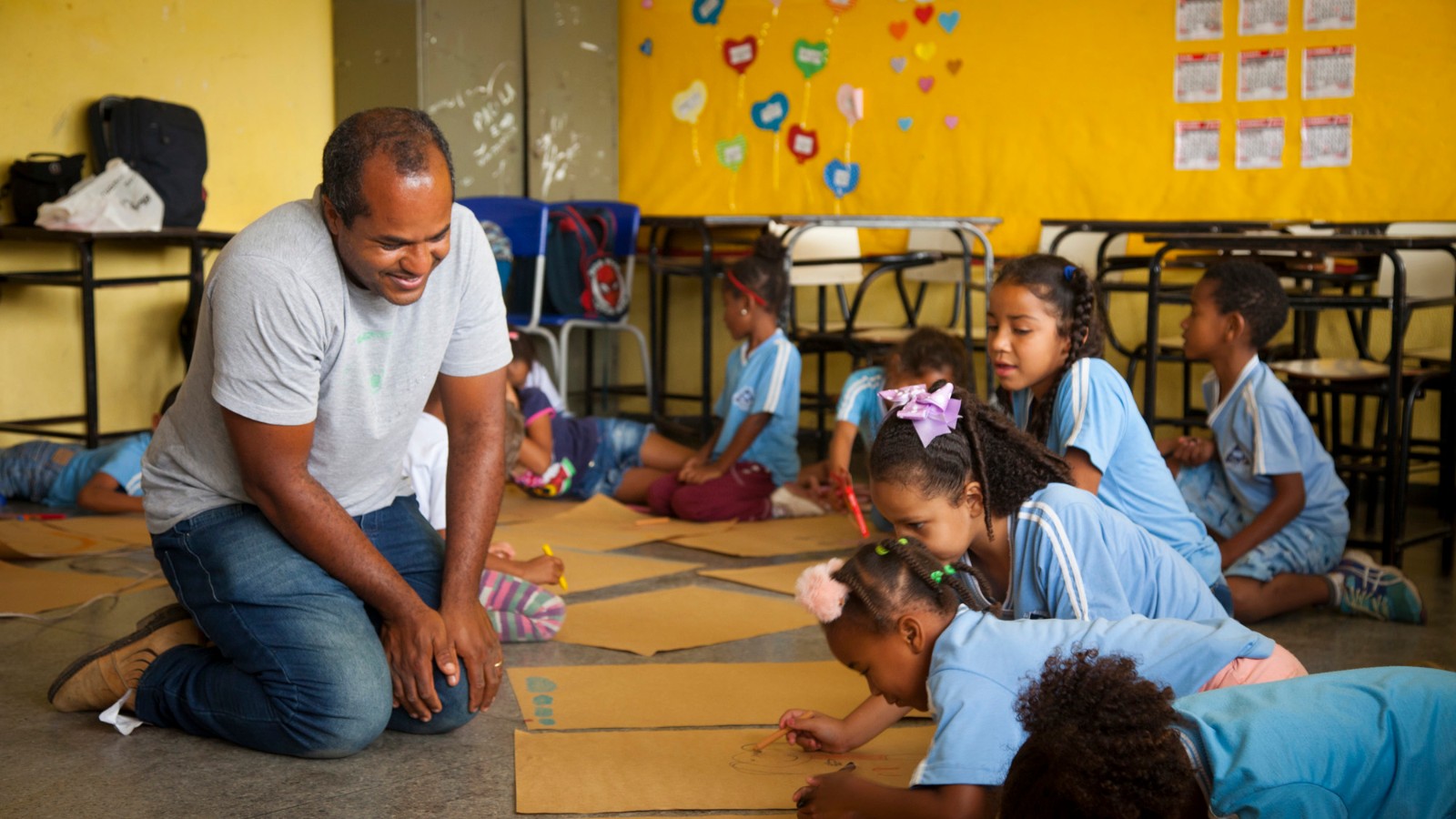
The poets of Afrolíricas were the second residents. This collective by Eliza Castro, Ana Luiza and Iza Reis stayed in the community for about 15 days talking and learning about quilombola culture and traditions. This approach will be transformed into a short-run book.
The artists Juliana Gontijo and Marcel Diogo were invited to the third residency. Juliana developed a work on the collective construction of a garden for EQTA. She produced a series of monotypes on wood where she simultaneously recorded image of plants and excerpts of residents' speeches about their use. The artist Marcel Diogo presented two works: "Despachos", which consisted of building signs with phrases illuminated by candles installed on the streets, and the series "Encantadxs", which presents images of people, animals and fantastic beings also lit by the fire of the candles.
LV: What were the biggest challenges in the process?
BV: The idea of a "cultural space” is, in most of the smaller Brazilian cities, a very abstract concept, as many of these municipalities do not have cultural facilities or a culture policy. Pinhões is a rural community, therefore cultural production is diluted in everyday life and the cultural space ends up working out as a meeting point. Bringing this idea to a tangible level was a difficult process in many ways. Firstly, in the construction of the space itself, since a cultural center as a concept can seem very abstract, but rising a building is very specific. Secondly, in the development of the cultural programme. Often, the idea of fulfilling a wish - even more with funds - seemed very far from the reality of the participants. "What do you mean, I can do whatever I want?" From a personal desire, they had to make a micro-scale management process happen. This at first seemed very foreign to them, but over time it became clearer.
LV: The fifth and final stage of the project consists of autonomous cultural management of the space. How is this happening?
BV: The funds for the project ended in December 2019 and this brought other challenges to the community, such as management and financing responsibilities. The presence of a physical structure is very important, as it helps to keep the project alive. At the same time, the space imposes specific needs: bills to pay, rules of use to be negotiated, maintenance. As I spread myself out of the project as an articulator, this also modifies the engagement dynamics: other community agents begin to get involved and other uses for the space are developed. A new land was offered to house the EQTA by one of the residents of the community, with a less provisional character; the group is already articulating to become an official association, writing a statute. The program is still organized by the community and the space is being adapted by them to new uses. It has its difficulties, but it also has so much potential.
Lorena: My heartful thanks to Fernanda Valério for the kind and thoughtful proofreading.
There are no comments for this content yet.
similar content

